
views
Preparing Your Clams

Make sure the clams you're going to be shucking are alive. A clam shell that is open when you receive it or opens easily by hand is typically dead. Keep the living clams and throw away any dead clams.

Clean your clams. Using a stiff brush, scrub the shell of each clam under cold, running water. This will rid the shell of any residual salt and sand.
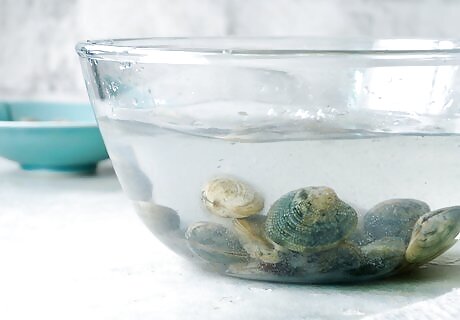
Soak the clams. Though you don't have to do this, it will help loosen up the clams a bit before you try to shuck them and will make the entire process easier. Here's how you do it: Pour 1 gallon (3.8 L) of water into a large bowl. Add 1/3 cup (78.86 ml) of salt to the gallon of water. Stir until the salt is completely dissolved into the water. Place all your cleaned clams in the water/salt mixture. Let the clams soak for 20 minutes. Drain water/salt mixture. Repeat the process of soaking your clams in a water/salt mixture 2 more times.

Refrigerate your clams. Place all the clams on a tray and them put them in the refrigerator for an hour. This will help relax the clams and make it easier to open their shells.
Shucking Your Clams
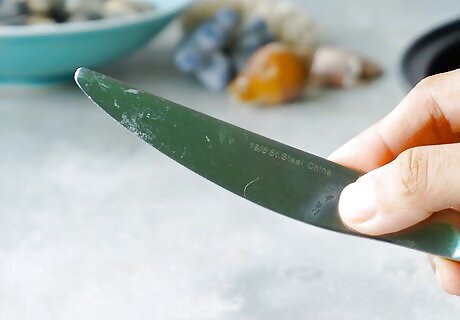
Get a proper shucking knife. You'll need a thin, 3" shucking knife that has a rounded tip that makes it ideal for shucking your clams. Don't confuse this with a pointed oyster knife, which is used differently. If you don't have one of these, make sure you use a small, sharp knife.
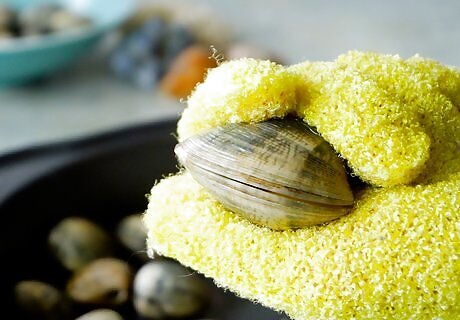
Grasp a clam in your hand. Use a towel to hold the clam in your hand. This will protect your hand when you pry open the clam shell with a knife. If you really feel unsteady, you can also wear gloves. Make sure the hinge of the clam shell is nestled in the area of your palm nearest your thumb. The opening of the clam should be at your fingertips. You can also press down on the clam a bit to give it some added pressure to make it easier to pry it open with the knife.
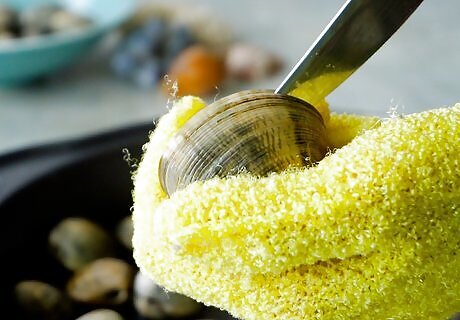
Insert a the tip of a paring or clam knife in between the clam shells. Press into the clam, right into the muscle. Alternately, you can insert the knife at the hinge of the shell, but then you'd have to use a lot more pressure to try to break open the hinge and shuck the clam that way. You'll have to squeeze the knife between the shells to loosed the adductor muscles and the hinge of the shells.
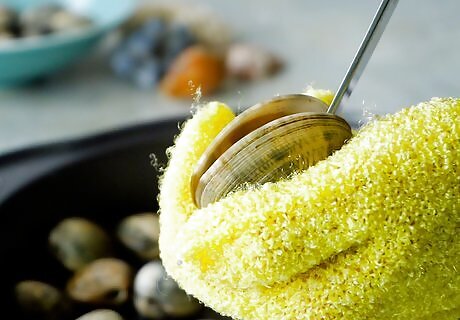
Twist your knife. Continue to twist the knife until you break the seal of the clam and your knife is inside the clam shell. Don't force it too much and be careful not to cut your hand. Use the knife more as a form of leverage than force. You will use the knife to pry open the top shell of the clam.
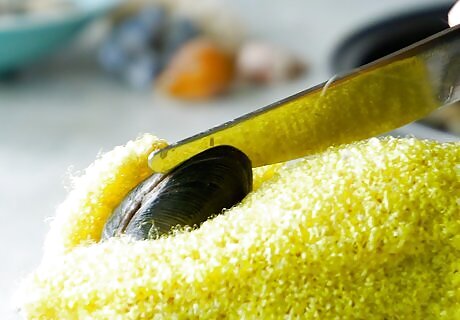
Cut around the seal of the clam shell slowly. This will ensure that you've cut the hinge of the clam shell and are ready to open the clam. Cut the upper adductors and take off the top shell. When the clam is ready, you will hear a nice snapping sound.
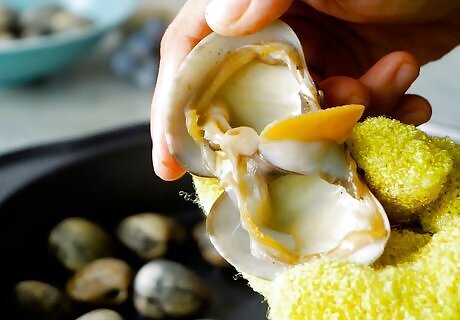
Remove the top shell. Using your fingers, pull the top shell off of the clam. Try to save the clam juice, which is a delicious part of the clam.
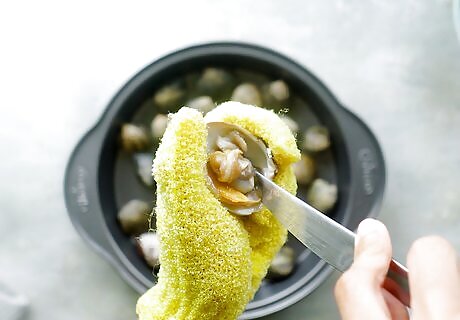
Cut the clam out of the bottom shell. Just slip the knife under the clam meat to loosen those lower adductors of the clam. Place each clam in a top shell to assemble clams on a half-shell, or prepare the clams according to a recipe. You can place the clams on ice until you're ready to eat or cook them.
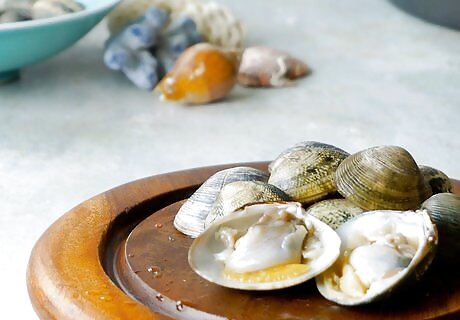
Finished.













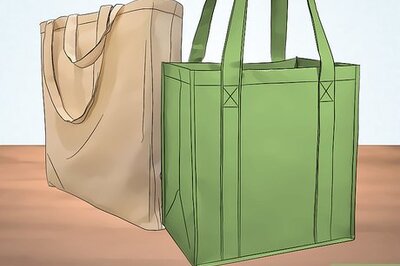



Comments
0 comment